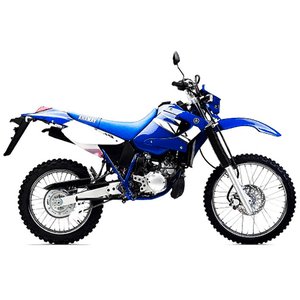Yamaha DT 125 [2004–2007]: A Lightweight Enduro Legend Revisited
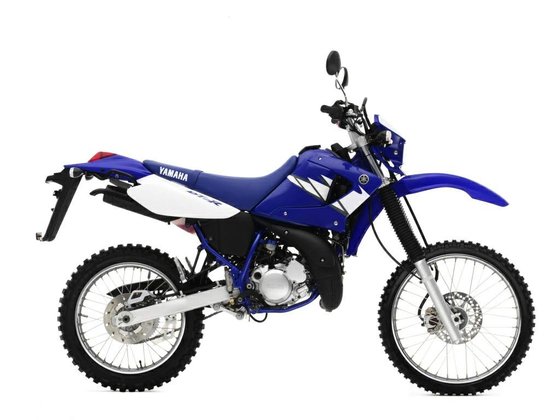
Introduction
The Yamaha DT 125, particularly the 2004–2007 RE generation, is a motorcycle that needs no introduction for enduro enthusiasts. This two-stroke legend carved its reputation as a lightweight, agile, and nearly indestructible machine that’s equally at home on forest trails, rocky paths, or even city streets. Designed to bridge the gap between motocross aggression and trail-friendly usability, the DT 125 RE remains a favorite for riders who crave simplicity, durability, and that unmistakable two-stroke buzz. Having recently spent a day thrashing a well-preserved 2006 model through mud, gravel, and tight singletrack, I’m here to break down why this bike still resonates with riders decades after its release—and why it’s worth keeping one alive with aftermarket upgrades.
Engine Performance: Two-Stroke Simplicity at Its Best
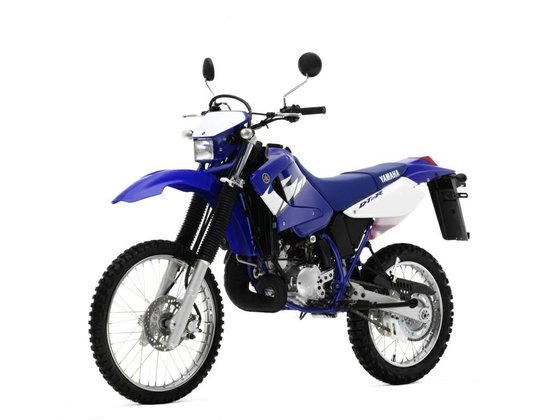
At the heart of the DT 125 RE lies a liquid-cooled, single-cylinder two-stroke engine displacing 124cc. With a bore and stroke of 56mm x 50.7mm (2.2 x 2.0 inches) and a modest compression ratio of 6.7:1, this engine isn’t about raw power—it’s about accessibility. The 14.8 HP (10.8 kW) peak at 8,000 RPM and 13 Nm (9.6 ft.lbs) of torque won’t set records, but the power delivery is where this mill shines.
The Mikuni TM28 carburetor ensures crisp throttle response, and the CDI ignition system eliminates the guesswork of timing adjustments. While later models (2005–2007) upgraded to a 6-speed gearbox, earlier variants stuck with a 5-speed—a detail that matters little when you’re dancing through gears on technical terrain. The engine’s separate lubrication system ("Autolube") means no premixing, a godsend for casual riders.
Riding Impression: Crack the throttle, and the DT 125 rewards you with a linear surge rather than a sudden hit. It’s forgiving for beginners but still engaging enough to let seasoned riders exploit its narrow powerband. On steep climbs, keeping the revs above 6,500 RPM is key, and the short-throw gearbox makes it easy to stay in the sweet spot.
Chassis and Handling: Featherweight Agility
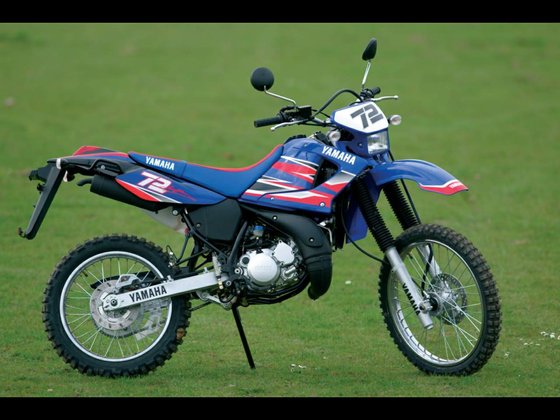
Weighing just 116 kg (256 lbs) dry, the DT 125 feels like an extension of your body. The steel frame and 1,415 mm (55.7-inch) wheelbase strike a perfect balance between stability at speed and flickability in tight corners.
Suspension:
- Front: Telescopic forks with 170 mm (6.6 inches) of travel soak up rocks and ruts without wallowing.
- Rear: A Monocross linkage system offers 200 mm (7.9 inches) of wheel travel, adjustable for preload to handle everything from solo trail rides to two-up jaunts.
Brakes: Single discs front (230mm/9.1 inches) and rear (220mm/8.7 inches) provide ample stopping power for a bike this light. Aftermarket sintered pads are worth considering for aggressive riders.
Tires: The 21-inch front (80/90-21) and 18-inch rear (110/80-18) combo offers a planted feel on loose surfaces. Swap the stock knobbies for modern hybrid tires if you’re mixing road and trail.
Riding Impression: Throw the DT into a berm, and it responds with telepathic feedback. The 915 mm (36-inch) seat height might intimidate shorter riders, but the narrow chassis lets you dab a foot easily. At highway speeds, the lack of wind protection is noticeable, but that’s not what this bike was built for.
Off-Road Capability: Where the DT 125 RE Shines
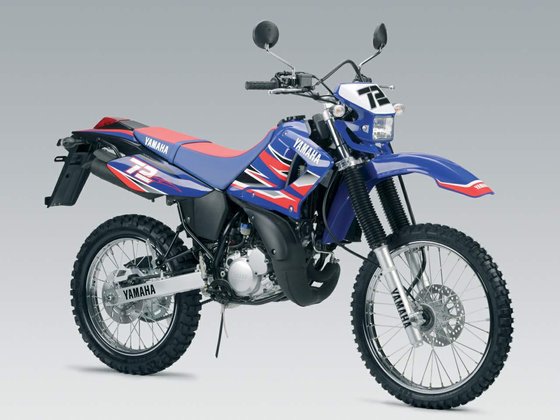
With 315 mm (12.4 inches) of ground clearance and a chassis that laughs at mid-trail corrections, the DT 125 is a master of chaos. The liquid-cooled engine avoids overheating in slow, technical sections—a common issue with air-cooled rivals.
Key Highlights:
- Weight Distribution: The fuel tank sits low, keeping the center of gravity planted during climbs.
- Ergonomics: Wide handlebars and neutral footpeg positioning allow for standing rides all day.
- Mod Potential: A aftermarket expansion chamber ($150–$300) wakes up the top end, while a reed valve upgrade sharpens throttle response.
Riding Impression: On a muddy uphill strewn with roots, the DT 125 clawed its way up with minimal slippage. The light weight lets you pivot around obstacles, and the suspension handles hard landings admirably.
On-Road Manners: Better Than You’d Expect

While no touring bike, the DT 125 holds its own on pavement. The 6-speed gearbox (2005–2007 models) cruises comfortably at 80 km/h (50 mph), though vibrations creep in past 90 km/h (56 mph). The 10.7-liter (2.8-gallon) tank delivers 200+ km (124 miles) of range, making it viable for day trips.
Competition: How the DT 125 Stacks Up
The DT 125’s contemporaries included:
- Suzuki RMX 125: More aggressive powerband but heavier at 123 kg (271 lbs). Requires frequent top-end rebuilds.
- KTM 125 EXC: Lighter and punchier, but pricier to maintain. KTM’s suspension edges out the Yamaha in whoops.
- Honda CRM 125: Softer power delivery and air cooling—better for beginners but less versatile.
Verdict: The Yamaha strikes the best balance between reliability and tunability. Parts availability is stellar, and the aftermarket support eclipses its rivals.
Maintenance: Keeping Your DT 125 RE Alive
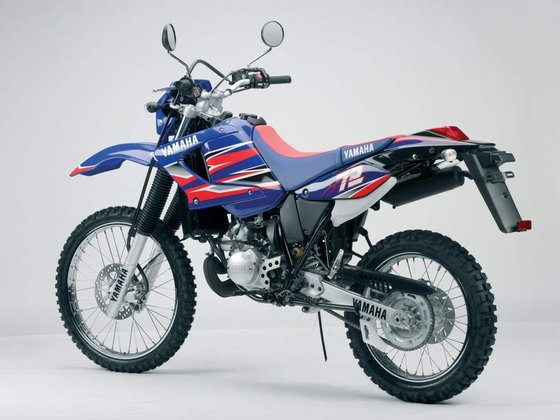
Critical Tips:
1. Two-Stroke Oil: Use JASO-FD-certified injector oil. The Autolube system is reliable but hates cheap lubricants.
2. Piston Replacements: Schedule a top-end rebuild every 5,000 km (3,100 miles) if ridden hard.
3. Carb Tuning: Clean the Mikuni TM28 every season. Consider a JD Jet Kit ($75) for altitude adjustments.
4. Suspension Refresh: Replace fork oil every 10,000 km (6,200 miles). MOTOPARTS.store stocks OEM seals.
5. Chain & Sprockets: Swap to a DID 520ERV3 chain and steel sprockets for longevity.
Recommended Upgrades from MOTOPARTS.store:
- High-flow air filters ($25–$50)
- Aftermarket exhaust systems ($200–$500)
- Heavy-duty clutch kits ($120)
- LED headlight conversions ($90)
Conclusion: A Timeless Trail Partner
The Yamaha DT 125 RE isn’t just a motorcycle—it’s a gateway to adventure. Its simplicity, durability, and sheer fun factor make it a standout in the 125cc enduro class. While newer bikes offer flashy tech, the DT 125 thrives on mechanical purity and a vast ecosystem of affordable parts. Whether you’re resurrecting a barn find or tweaking a daily rider, MOTOPARTS.store has the upgrades to keep this legend tearing up trails for another decade.
Revive. Ride. Repeat.
Specifications sheet
| Engine | |
|---|---|
| Stroke: | Two-stroke |
| Max power: | 10 kW | 13.0 hp |
| Max torque: | 16 Nm |
| Fuel system: | Carburettor. Mikuni TM28-92 |
| Max power @: | 8000 rpm |
| Displacement: | 124 ccm |
| Max torque @: | 7000 rpm |
| Configuration: | Single |
| Cooling system: | Liquid |
| Compression ratio: | 6.8:1 |
| Lubrication system: | Autolube |
| Number of cylinders: | 1 |
| Dimensions | |
|---|---|
| Wheelbase: | 1415 mm (55.7 in) |
| Dry weight: | 116 |
| Seat height: | 915 mm (36.0 in) |
| Overall width: | 795 mm (31.3 in) |
| Overall height: | 1185 mm (46.7 in) |
| Overall length: | 2205 mm (86.8 in) |
| Ground clearance: | 315 mm (12.4 in) |
| Fuel tank capacity: | 10.7 L (2.83 US gal) |
| Drivetrain | |
|---|---|
| Clutch: | Wet multiplate |
| Final drive: | chain |
| Transmission: | 6-speed |
| Maintenance | |
|---|---|
| Rear tire: | 110/80-18 |
| Engine oil: | SAE 80W-90 |
| Front tire: | 80/90-21 |
| Brake fluid: | DOT 4 |
| Spark plugs: | NGK CR8E or NGK CR8EIX |
| Engine oil capacity: | 1.2 |
| Chassis and Suspension | |
|---|---|
| Frame: | Steel backbone |
| Rear brakes: | Single 220 mm disc |
| Front brakes: | Single 230 mm disc |
| Rear suspension: | Monocross linkage |
| Front suspension: | 41mm Telescopic fork |
| Rear wheel travel: | 265 mm (10.4 in) |
| Front wheel travel: | 270 mm (10.6 in) |



